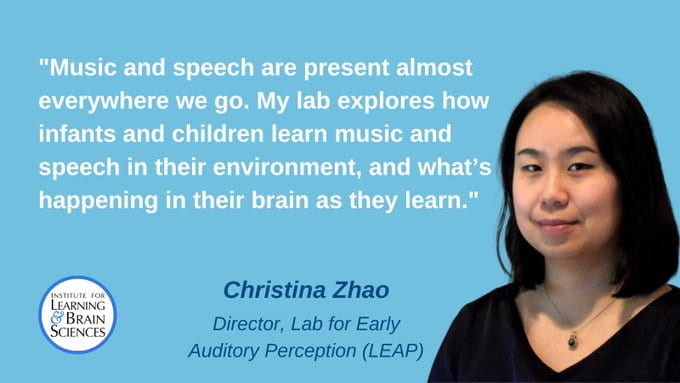Our Research
Research Overview
One big research area of LEAP concentrates on developing a comprehensive understanding of the underlying neural mechanisms that support language acquisition. For example, what structural and functional changes in the brain are relevant for infant speech learning? How may they be related to other factors, such as infants’ cognitive skills and genetics?

Another important research inquiry in our lab concerns the effect of the auditory environment and experiences on infants’ speech learning and general development, particularly the effect of music.
We are also highly focused on how speech learning in infancy is related to later language development, and if we can detect potential atypical language development from infancy. The hope is that our findings will support early intervention strategies.
Research Methods
We use a wide range of research methods to answer our research questions. To examine neural functions, we largely rely on Magnetoencephalography (MEG) and Electroencephalography (EEG) that are sensitive to millisecond-to-millisecond level neural activities, which is crucial to study how brains process fast-changing sounds. To investigate neural structures, we collaborate with MRI experts and implement various neural imaging techniques. We also study physiological states of participants by examining Electrocardiography (ECG) and Electrooculography (EOG). Many of these physiological measures are used in combination with behavioral methods, such as comprehensive speech-language assessments. Finally, we incorporate environmental measures (e.g. Language ENvironment Analysis) to derive a picture of children’s auditory environments and improve our understanding of how early language environments interact with later language development. To learn more about our methodology and MEG imaging, please explore the Resources page of our website.





